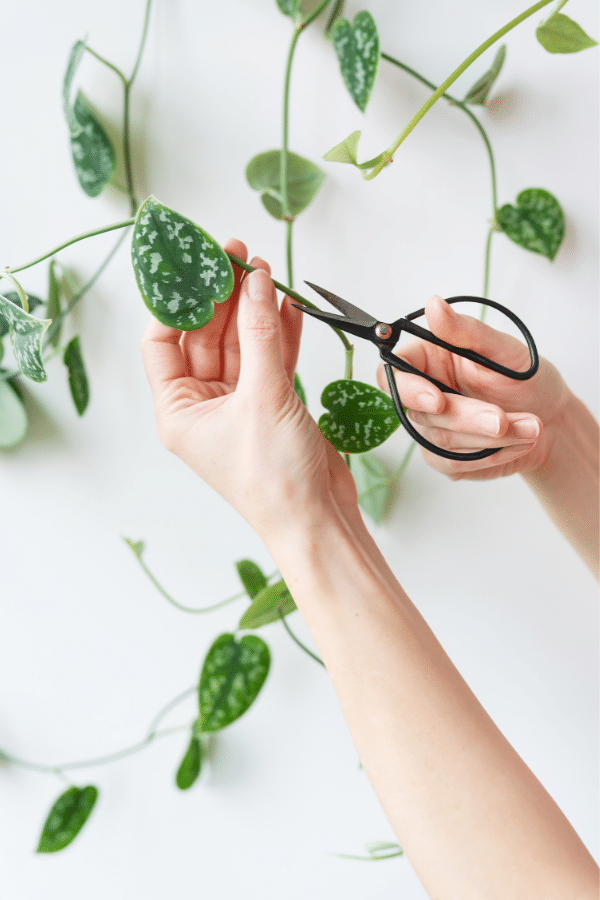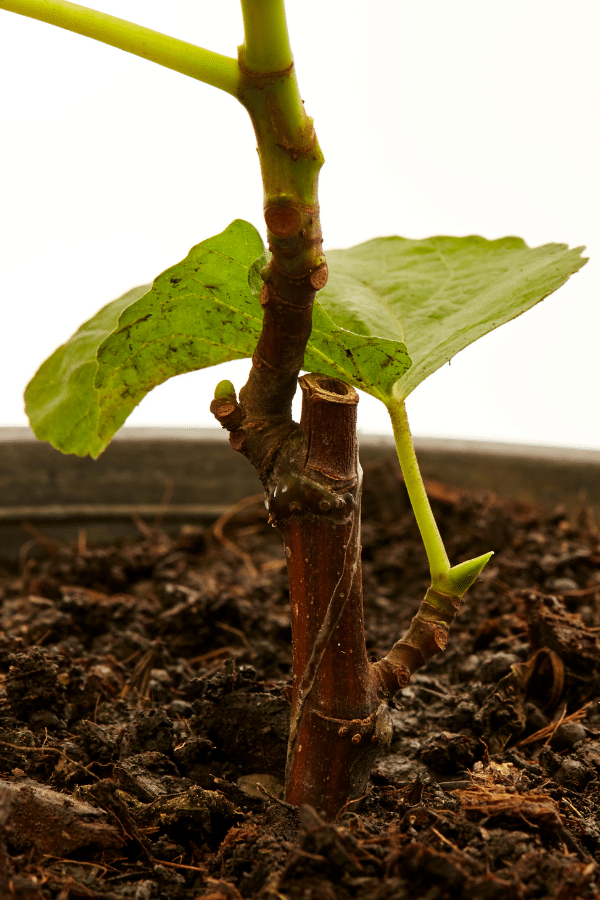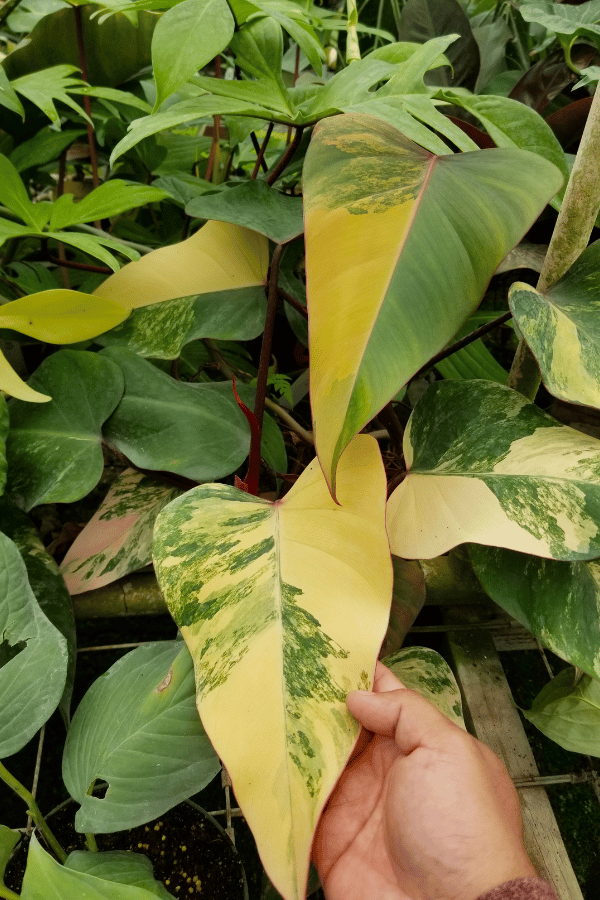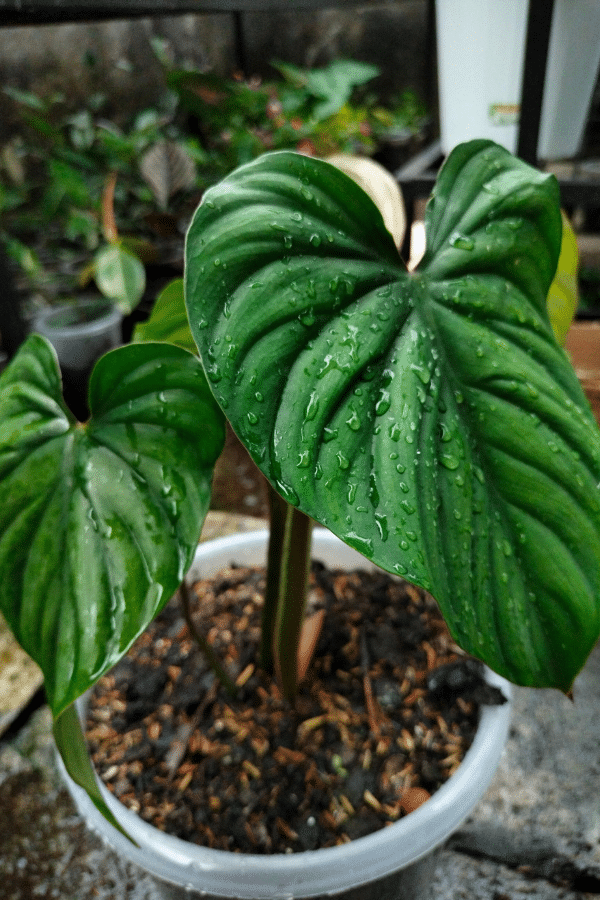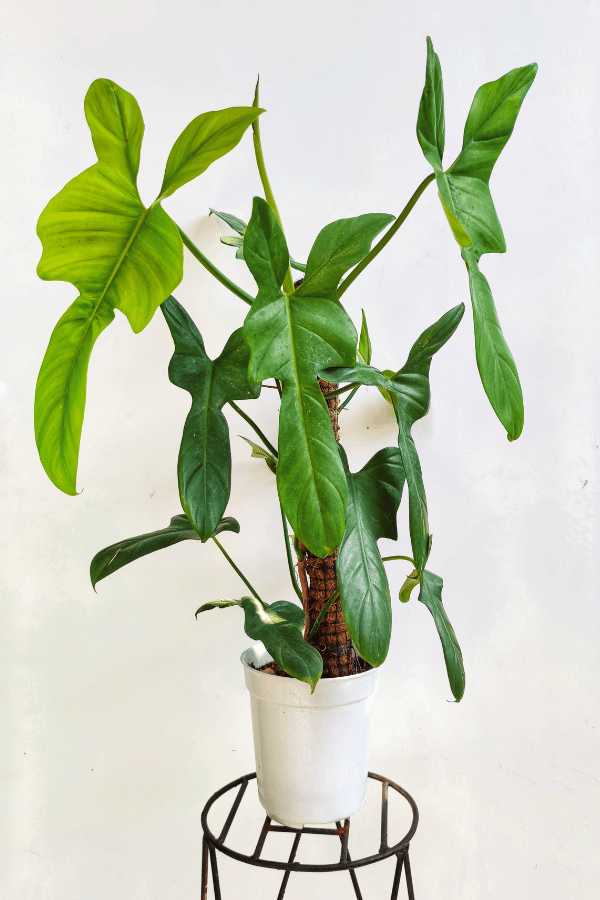Staghorn Fern
Scientific Name: Platycerium Bifurcatum
Staghorn Fern care is an easy Fern to grow and care for. Staghorn Ferns offer some uniqueness to other houseplants for the simple fact that you will usually see it mounted on a wooden plaque as that’s how it grows best.
To give this Fern plant the best care, it requires well-draining soil that is rich in nutrients, allow the soil to dry out before watering, provide it with bright indirect sunlight, temperatures ranging from 50-100F, and high humidity levels.
Quick Care Overview
| Common Name | Staghorn Fern |
| Scientific Name | Platycerium |
| Family | Polipodiaceae |
| Origin | Southeast Asia, Australia |
| Growth Rate | Slow |
| Identification | Light green fronds, usually mounted on wood |
| Height | Up to 3 feet tall |
| Soil | Well-draining soil |
| Water | Allow soil to dry out between waterings |
| Temperature | 50-100F |
| Sunlight | Bright indirect sunlight |
| Toxic to Cats & Dogs | No |
| Toxic to Humans | No |
| Pests | Mealybugs, scale |
| Diseases | Rhizoctonia |
Below we will dive deep into this Staghorn Fern care guide.
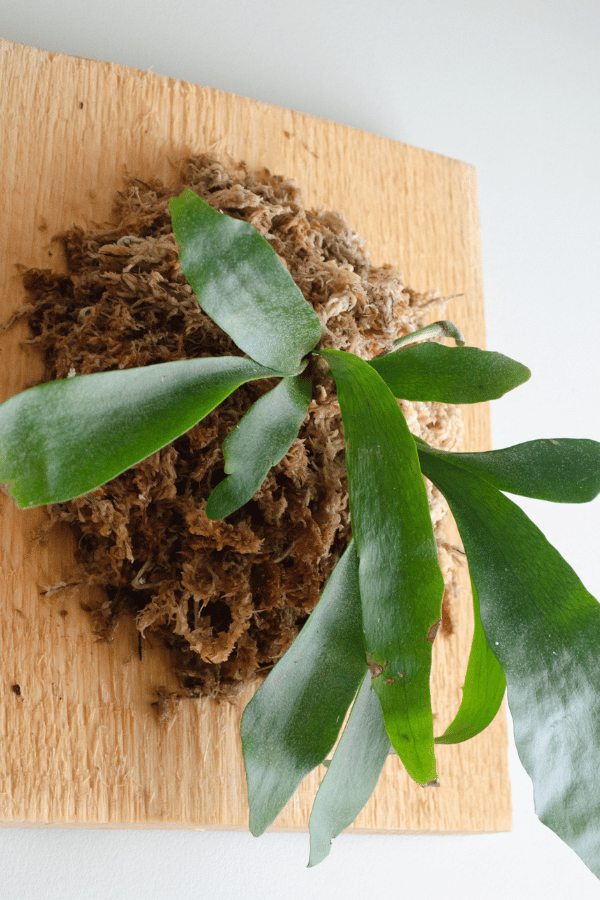
Staghorn Fern History
The Staghorn Fern gets its name from its unique fronds that appear similar to deer or elk antlers. Once mature, these plants grow quite large and have become quite popular due to their striking appearance. Native to Asia and parts of Australia, this Polipodiaceae family member is a favorite amongst fern collectors.
Staghorn Fern Identification
This epiphytic plant is found in its natural habitat growing from rocks and tree trunks. The Staghorn Fern has two different fronds. Fronds will appear either as basal fronds covering the root structure, or larger upward growing fronds that appear similar to stag antlers.
Staghorn Fern Growth Facts
The Staghorn Fern thrives in warm, humid climates and is relatively easy to care for.
How Big Does a Staghorn Fern Get?
The Staghorn Fern will grow up to 3 feet tall and 3 feet wide when grown under cultivation.
Staghorn Fern Care
This stunning plant is not difficult to care for, as long as you can provide it with conditions similar to its sub-tropical natural environment. Plenty of indirect sun and plenty of moisture is the key to keeping this Fern happy.
Staghorn Fern Soil
The Staghorn Fern does best when mounted. As the base, the growing medium should include a mixture of peat or coco coir, compost, and moss. For a fastening material, use plastic strips, nylon, fishing line, or wire to mount your fern upwards on wooden boards. Alternatively, you may choose to hang it from a basket.
Staghorn Fern Fertilizer
Your Staghorn Fern will benefit from a monthly feeding from a liquid, balanced fertilizer. Ensure that you follow all label instructions and do not overfertilize. Fertilizing frequency should be reduced in fall to bimonthly and halted in winter during cooler months.
Staghorn Fern Watering
The Staghorn Fern requires frequent watering but should be allowed to dry out between waterings. In the warm growing season of spring and summer, depending on growing conditions, you will likely need to water your plant weekly. In the fall and winter, water frequency should be reduced to every two to three weeks. If you notice any browning or blackened fronds, you are likely overwatering. However, if frond tips begin to brown, it is probably indicative that your staghorn fern requires more water.
To water Staghorn Fern, take it off of the wall or wherever it is mounted and dump the root ball in a tub of water in the sink or shower. Let it soak for 10 to 20 minutes. Let it drip dry before hanging back up.
Staghorn Fern Light Requirements
The Staghorn Fern grows best if kept in bright indirect sunlight. While this plant may handle a few hours of direct sunlight with enough water and humidity, fronds may burn quickly. Alternatively, areas with low light are likely to encourage disease and stagnation of growth.
Staghorn Fern Temperature & Humidity
While the Staghorn Fern prefers to remain warm, it is quite tolerant of a range of conditions when mature. It may survive in temperatures between 50 to 100F. Additionally, this plant, if mature, may survive slightly freezing temperatures. Still, it is not recommended as this may cause permanent damage, especially when young. The Staghorn Fern loves humidity and should be kept near a humidifier, spritzed frequently, or kept in a humid room, such as a bathroom, providing there is adequate light. Since this plant loves humidity, you may mist the root ball and the leaves.
Repotting Staghorn Fern
The Staghorn Fern likes to remain slightly rootbound and should not be repotted unless necessary. However, every 2-3 years, or whenever the plant appears to be bursting from its container, it should be repotted. Select a pot that is one size up from the previous container or two inches larger in diameter. Carefully repot your Staghorn Fern, ensuring not to disturb the roots. While repotting, ensure that the stem and fronds remain exposed and not buried under the soil. After repotting, water thoroughly, and keep in indirect light. Being epiphytes, this plant does great on bark slabs.
Staghorn Fern Maintenance & Pruning
The Staghorn Fern requires very little maintenance. In fact, the staghorn fern will tolerate very little pruning. The staghorn fern only should be pruned to slightly create clearance around the plant, to remove pups, or to remove any diseased or discolored fronds.
Staghorn Fern Propagation
Like many other Ferns, the Staghorn Fern may be propagated by spore or division. Division is by far the easiest method. To divide, take a small chunk of the mature plant that contains a bit of root and foliage and plant it in its own container. Keep the divided plant moist and warm until growing resumes. Rooting may take some time.
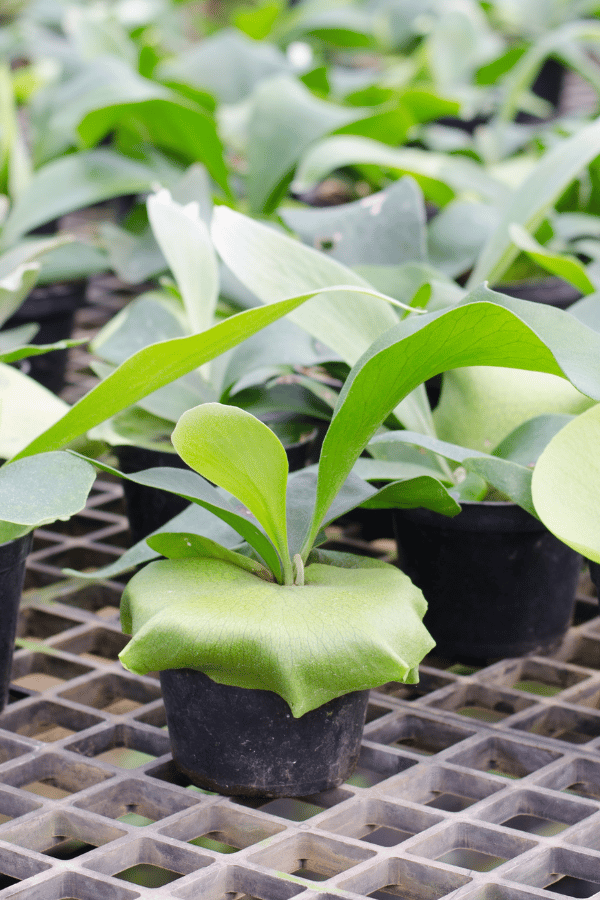
Staghorn Fern Toxicity
The Staghorn Fern is non-toxic to humans, cats, and dogs.
Toxicity to Humans
The Staghorn Fern is not considered toxic to humans and is safe for babies and little children to be around. However, this plant is not considered edible, so you should avoid eating it.
Toxicity to Cats & Dogs
The Staghorn Fern is not considered toxic to cats or dogs. However, you should avoid allowing your pet to consume this plant.
Staghorn Fern Problems
Staghorn Fern Leaves Turning Yellow
When fronds of the Staghorn Fern turn yellow, it is often due to either a watering issue or pests.
Staghorn Fern Leaves Turning Brown
The number one cause of frond browning when it comes to the Staghorn Fern is due to insufficient humidity or moisture. Getting a moisture meter is the best way to know when to up the humidity or water your plant.
Staghorn Fern Diseases
While a healthy Staghorn Fern will be unlikely to suffer any disease issues, a fungal disease known as rhizoctonia is known to affect this fern. Watch out for black spots. If you see any black spots, you should reduce humidity and treat with a fungicide immediately
Staghorn Fern Pests
The Staghorn Fern is known to be susceptible to infestation from mealybugs and scale. Upon identifying an infestation, isolate your plant, and treat it with a pesticide.

